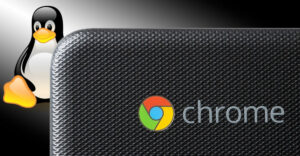
If you’ve been getting into the convenience and usability of the smartphone and tablet User Interface (UI) and are wondering just why your cable provider is unable to create anything with the same elegance and function, it may be time to slap Android on your TV — yourself.
There are a few ways to approach this, and all of the methods have pros and cons.
Google TV
The method Google has planned for us is with its native Google TV operating system — a type of Android OS — designed specifically for the big screen.
Negatives: At a hundred dollars and up, the boxes are expensive; and if you’re used to copious numbers of phone and tablet apps, you may be disappointed. There’s a limited number of apps.
Connecting Smartphones
Alternatives include hooking your smartphone to a TV with an optionally purchasedmini-HDMI cable. You’ll get your smartphone apps all right, but you may run into resolution issues.
Smartphones and smartphone apps often don’t output the kind of resolution needed, and the screen can appear pixilated.
Tablets and Mini-Computers
Use the same mini-HDMI cable — or in rare cases, a full-sized HDMI cable — to connect a tablet to your television.
Or purchase a dedicated mini-computer that runs Android.
I’ve been using a US$50 HDMI IPTV player stick I imported from Chinathrough Amazon. The device has a small, low-power 1 GHz Cortex A5 ARM processor, and the whole shebang runs Android 4.0, aka Ice Cream Sandwich.
RAM comes in at 512 MB, which is problematic because it’s not enough. However, the beauty of the system is it’s cheap; it’s dedicated, so you don’t have to swapcables all the time, and it runs your garden-variety Android phone and tablet apps — just like on your phone or tablet. Just add a mouse to the built-in USB port for navigation.
Here’s how to approach the project:
Step 1: Pixels
Determine what you have to work with. Most current televisions display HD in either 1280 x 720 pixels, or 1920 x 1080 pixels.
Although the Android source will scale to fit the screen, apps that are designed fortablets, which also use high resolutions will render best. Toshiba’s Thrive tablet, for example, features a TV-close 1280 x 800 pixel screen.
Some phones simply mirror the phone screen when outputting to the HDMI cable;this can cause rendering problems if the phone’s screen isn’t HD or the phone isn’toutputting HD.
Some apps are available in a phone version and also a tablet version — sometimes called “HD.” In those cases, use the tablet version.
Google TV-specific apps are designed for TVs.
Step 2: Cables
Inspect the hardware to check the ports available. TVs use full-sized HDMI ports. Phones and some tablets use mini-HDMI ports. Some tablets use full-sized HDMI ports.
Mini-HDMI to HDMI cables are available, as are HDMI to HDMI cables.
Mini-computers like the CX-01 have built-in male HDMI plugs that just insert into the TV’s standard full-sized HDMI port.
Step 3: Operation
Connect the Android device to the TV. Then choose “Mirror Phone on Display” orsimilar if you are prompted.
Some devices will perform the mirror without a dialog box requesting your input.
Then give the TV a few seconds to recognize the input.
Tip: The CX-01 ships with default Chinese characters. Unless you read Pīnyīn, you will need to set the language before doing anything. Because I don’t read it, I used an existing Android device as a map, following the Settings screen conventions.
Step 4: Viewing
Verify what works. Some apps work and look good, and some don’t. It’s the nature ofthe beast.
The Slingbox app designed for tablets freezes periodically on the CX-01, probably due to RAM issues. YouTube works well across devices.
Want to Ask a Tech Question?
Is there a piece of tech you’d like to know how to operate properly? Is there a gadget that’s got you confounded? Please send your tech questions to me, and I’ll try to answer as many as possible in this column.
And use the Talkback feature below to add your comments!






















































Their is nothing really on the Android system I care to put on a big screen TV. The Roku I use is very inexpensive and does very well putting content on my TV. If your a Apple fan you have of course Apple TV. I suspect in the end cable TV providers will of course move towards offering their TV content through their broadband service as a standalone service. Not requiring the traditional cable TV service. As more people drop cable TV and Satellite I think cable companies will have to acknowledge that streaming services are offering alternatives already. I can see a day when a person can buy a adaptor like what you describe to plug into your TV to access apps and services. Android of course is a cheap way to do this.
But TV’s have already begun to offer these types of services without a adaptor.